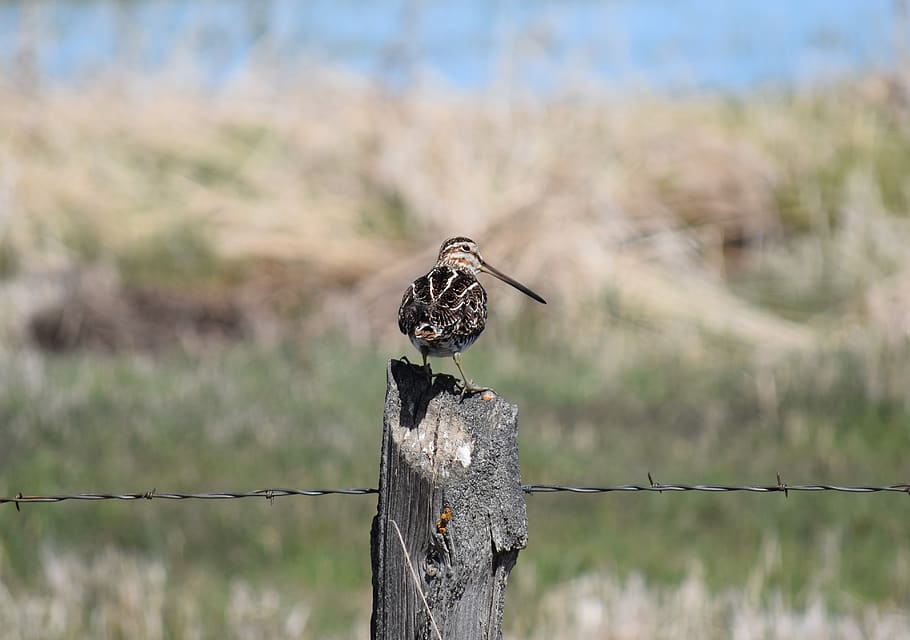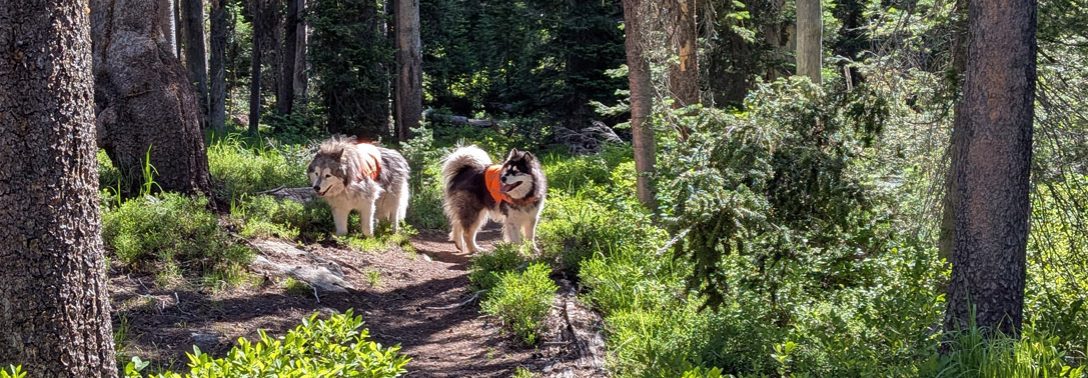I remember going on a snipe hunt as a kid. I was maybe seven years old. My father had fun with that, convincing me a snipe was a cute furry creature like a hamster that I could take home as a pet if I caught one in the burlap bag he handed me. He showed me how to bang a stick against the ground to scare the snipe into the sack. Several families were camped together at a lake for a weekend, so I’m sure the other young kids and I provided lots of entertainment for the adults around the campfire that evening as we earnestly hunted snipe.
According to Wikipedia, “A snipe hunt is a type of practical joke or fool’s errand, in existence in North America as early as the 1840s, in which an unsuspecting newcomer is duped into trying to catch a non-existent animal called a snipe.”
I learned the hard way what a snipe hunt is. But I had no idea there was an actual bird called a snipe until today.
***
This morning I did some research about a distinctive bird call heard earlier today while walking the boys along a road in the valley. It’s a sound I hear mostly this time of year, never in winter, so I knew it was a migrating bird of some kind. It’s a beautiful sound. I really noticed and tuned into it last year but never did discover what type of bird it was.
Now these birds and their distinctive sound are back and dammit, I want to know what they are!
I hear these birds at all times of day over the pastures in the valley as well as the open lots in my subdivision, like mine. More so at sunset. I don’t hear them up in the forest.
Last year I finally realized that the sound was made while the bird was in flight. This morning, with things even more quiet than usual as people stay home and there’s much less traffic on the nearby two-lane highway, I really focused in on trying to find the particular bird making the sound. I’m familiar with the red-winged blackbirds, flickers, killdeer, magpies and wrens already singing away now that they’ve returned. This was a different bird, though, not hanging out on the telephone wires or bush branches with the other song birds.
Following the distinctive sound, I noticed smallish birds circling above. I tracked the sound to them. They’re usually quite high up, making huge circles over the pastures and road. Without binoculars I couldn’t really tell much about the bird; too high and far away. Then one time I noticed, when one flew a little lower overhead, that it had a really long beak, and it folded it’s wings inward a bit – into a sort of soft V shape – as it briefly dove quite fast, making its distinctive sound, before continuing to fly in big circles and repeating the diving. The sound always accompanied the diving.
A mating ritual?

Last year on one of these walks I saw an odd-looking bird standing on a fence post. It had a really long beak. I even took a (poor) photo of it because it was so distinctive and I wanted to learn what it was. I looked through my Birds of Idaho book but couldn’t find it. I tried again today. No luck.
(Photo not mine, but a close depiction of what I saw.)
During this morning’s walk I made a short video of one of these birds in flight and the sound it makes. The bird is just a speck in the sky in the video (look between the two lower telephone wires), but at least I recorded the sound because I can’t for the life of me imitate it or even describe it.
Back home, I started researching online for sounds made by Idaho birds with long beaks. I finally discovered it’s a Wilson’s snipe. That brought back memories of that long-ago snipe hunt which opened this post.
Most intriguing of all is that the male snipe isn’t vocalizing with its mouth. It’s not singing or calling. The sound comes from vibration of its tail feathers when it dives, called drumming, or winnowing. It’s meant to threaten other birds, with the possible side benefit of charming the lady snipes although that’s not its primary purpose.

Learning the sound comes from vibrations took me down another memory lane, yet another involving my father, but this time his work as a Boeing test pilot.
Here’s a portion of the Wikipedia page (without citations) for snipe drumming: The specifics of how this extraordinary sound is produced can be explained by looking at the tail feathers. The sound is generated by vibration of the outer rectrices in the airstream modified by the set of wings. Drumming […] begins quite soft, increasing in volume and frequency as the dive progresses—reaching a crescendo just before the dive concludes. Each drum is several seconds in length and is full of rich harmonies. …In order for the drumming sound to be produced, the snipe must reach a velocity of 25 mph (40 km/h) which is required to start the vibration of the outer tail-feathers. …To make sure the feathers are able to withstand the strain of the vibrations, they are very strong in their structure. […] To ensure that the vibrations occur within a safe limit, the wings of the snipe are used. The quivering of the wings interrupts the flow of air to the tail-feathers during a dive and actually decreases the vibration, which is what allows for the shaky and tremulous quality of the drumming sound.
Drumming is…flutter!
Flutter is an aerodynamicist’s term for mechanical vibration or oscillation. Omg, I spent hours and hours on the topic of flutter and flutter-clearance testing while researching and writing my book, Growing Up Boeing. I interviewed my father and several other pilots and flight test engineers about the dangers of flutter in airplanes (causes them to disintegrate midair if it isn’t dampened; I used the collapse of the Tacoma Narrows Bridge – nicknamed Galloping Gertie – in 1940 due to high winds as a prime example of the disastrous results of flutter in a structure). I described in detail how test pilots do the dangerous work of making sure there is no flutter in new airplane models, taking them to extreme speeds and angles of attack in their test programs. One of the pilots I profiled nearly lost his life doing high speed, steep angle of attack flutter-clearance testing in the first 737. You don’t mess with flutter.
Wilson’s snipes are the kings of controlled flutter.
Here’s an excellent copyrighted photo of a male snipe winnowing, showing the splayed tail feathers.
Having put all this together – vibrations of snipe tail feathers while diving with the flutter-clearance testing in jets my father did– I now love the drumming of Wilson’s snipes even more. Such a cool sound, nature at her best with an assist from physics. I just wish my father were alive so he and I could marvel about it together. I owe my love of nature, wildlife and science to him. Dad would have geeked out about this as much as I have.
Instead, I’ll geek out with you, my blog readers.
And forever more, I’ll think of my father whenever I hear the lovely sound of Wilson’s snipe drumming.
[Here are two audio recordings of a Wilson’s snipe on the Audubon Society website, recordings #1 and #2, both much better than that in my video.]
Featured image: Wilson’s snipe, Wikipedia, CC BY-SA 3.0.


That is so cool! Wow! Thanks for the information the sound and the stories.
LikeLiked by 1 person
Thanks – glad you enjoyed it! I had so much fun deep-diving into all things snipe today 🙂
LikeLiked by 1 person
Been on a few snipe hunts myself…
LikeLiked by 1 person
Love them!
LikeLiked by 1 person
Me, too! Just wish I’d known about them sooner!
LikeLiked by 1 person
Such an eerie sound! I’m sure I’ve heard it in movies–probably horror movies–but wouldn’t have been able to guess what it was. Snipe and woodcock are strikingly beautiful birds.
LikeLiked by 1 person
Eerie is a good word for it. Maybe Hitchcock used the sound of snipes in flight in The Birds!
Snipes are now one of my favorite birds. Can’t believe I didn’t know about them before now.
LikeLiked by 1 person
When I went on a snipe hunt as a kid, I was told it was a type of bird. Someone in the know was getting to literal.
LikeLiked by 1 person
Well, at least they didn’t lead you as far astray as my father led me!
LikeLiked by 1 person
I had a similar experience as a child, but the critter was called a Bobwhite.
Then I met a guy in adulthood named Bob White.
I blamed him for juvenile embarrassment.
LikeLiked by 1 person
Bobwhite; that’s new to me. Poor Bob White!
LikeLike
Birds are so beautiful 😍😍😍
LikeLiked by 1 person